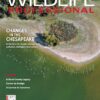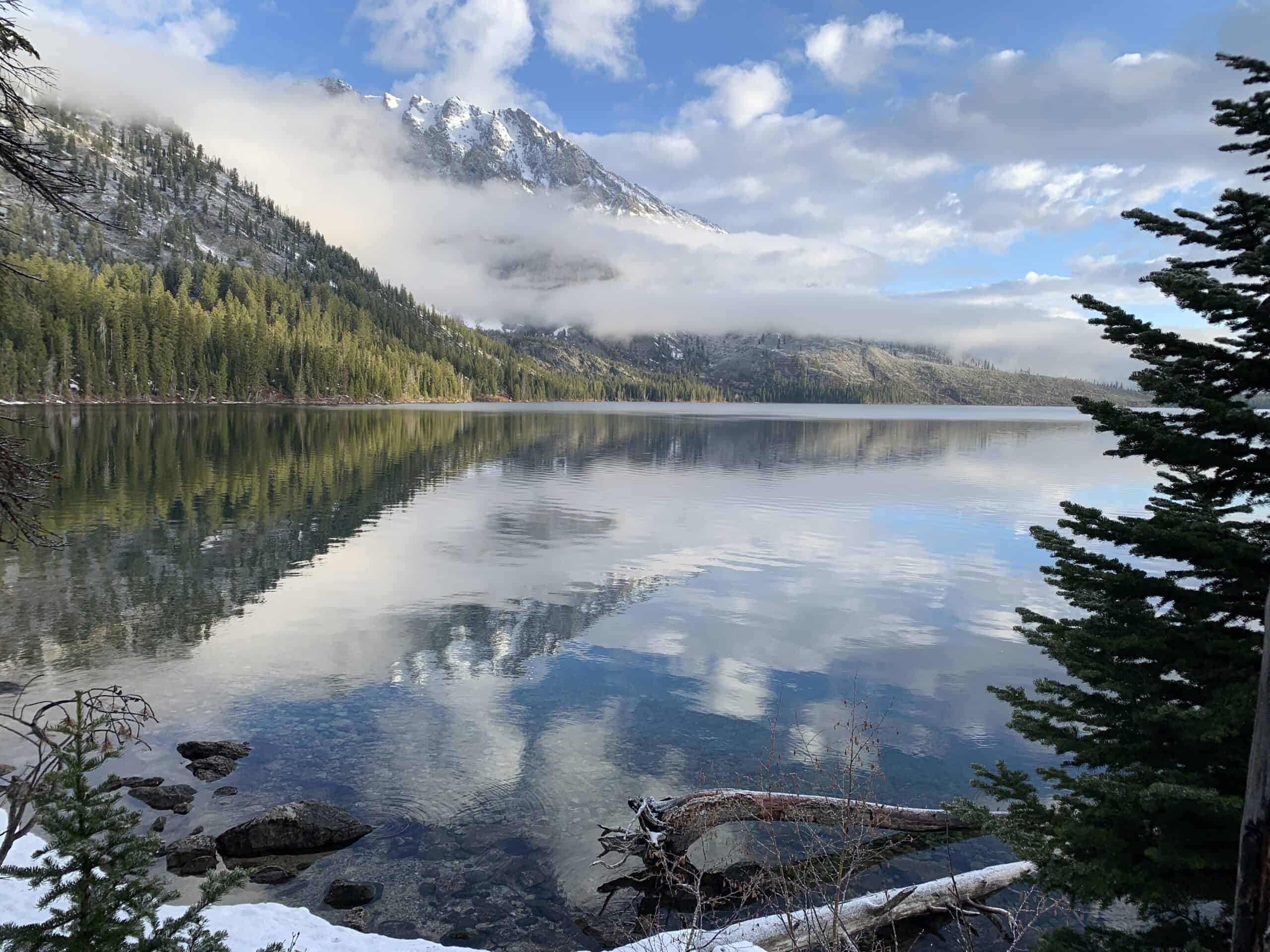Strategic Plan
Over the next 5 years and beyond, TWS will maintain, enhance, or expand its performance and leadership in each mission priority area:
- Building Community – engage and evolve an inclusive community of diverse wildlife professionals to conserve wildlife and their habitats
- Supporting Professionals – enhance support and provide resources to ensure professionals effectively influence the future of wildlife conservation
- Exercising External Influence – TWS is an effective voice and a trusted resource for wildlife science, conservation, and management
Each year, TWS will take action on and track progress of each of the goals, objectives, and strategies identified for each mission-driven priority in the strategic plan. Priority tactics aligned with each set of strategies will be developed into annual operations plans, along with performance metrics, staff resources, and budgets needed to achieve results. Many of the objectives and strategies in the plan are aspirational for TWS and implementation will depend on securing additional budget resources or significant volunteer service from TWS members.
Vision
A world where wildlife and people thrive in resilient ecosystems.


Mission
Empower wildlife professionals to advance conservation through science, community, and professional excellence.
About TWS
-
About
Founded in 1937, The Wildlife Society is an international network of over 11,000 leaders in wildlife science, management and conservation who are dedicated to excellence in wildlife stewardship.
-
History
Founded in 1937, The Wildlife Society is an international network of over 11,000 leaders in wildlife science, management and conservation who are dedicated to excellence in wildlife stewardship.
Wildlife conservation emerged as a social and political movement in the United States and Canada during the 19th Century. The movement was led by “sport hunters,” who decried the devastating losses of wildlife caused by “market hunters” – those who hunted for profit. One of the major causes of market hunting was the Industrial Revolution, since it shifted human populations from farms to the cities, and created a demand for meat. As sport hunters organized to protect lands from market hunting, they developed codes of conduct and ethics and promoted the concept of “Fair Chase,” where some central purposes of hunting became things such as the development of pioneer skills and self restraint. Most importantly, the advocacy of organized sport hunters through the New York Sportsmen’s Club, the Boone and Crockett Club, the Campfire Club and others resulted in government at the state, provincial and federal levels taking legal responsibility for wildlife conservation and management.
The early years saw much progress, with the establishment of state and provincial game agencies in both the United States and Canada, and the Federal Division of Economic Ornithology and Mammalogy (later the Bureau of Biological Survey and U.S. Fish and Wildlife Service) in the U.S. Through the early 1900’s, wildlife conservation was mostly a program of refuge establishment, game breeding, law enforcement, predator control, establishment of seasons and bag limits, and surveys. As time went on, however, many leading conservationists began to realize that more actions were needed in order to stem continuing losses and conserve wildlife.
Wildlife conservation and management became recognized as a formal discipline in the 1930’s. Wildlifers had been meeting annually for many years, but until Aldo Leopold, Arthur Allen, and Herbert Stoddard began to give presentations on wildlife ecology and management in the late 1920’s, the topics discussed focused largely on game breeding. Leopold and a distinguished group of wildlife conservationists were asked by the American Game Institute (now Wildlife Management Institute) to draft a policy to guide wildlife conservation. The 1930 American Game Policy laid out a broad vision, acknowledging that existing conservation programs were inadequate to stem the declines in wildlife. The policy called for a program of restoration implemented by scientifically trained professionals with a stable funding source. The policy also declared it was time for wildlife management to “be recognized as a distinct profession and developed accordingly.”
The subsequent establishment of university programs (beginning with Wisconsin in 1933) and the Cooperative Wildlife Research Units gave life to the policy. The Pittman-Robertson Federal Aid in Wildlife Restoration Act provided stable funding as called for in the policy (Robertson was one of the policy’s authors).
Wildlife conservation and management still lacked a nucleus – the organization to establish professional and ethical standards and promote communication. In the summer of 1935, Ted Frison, Director of the Illinois Natural History Survey, wrote to several colleagues encouraging them to meet in Urbana to discuss the problems they shared in achieving conservation. Wildlifers from many Midwest states met in Urbana that December to discuss forming a national professional society. Two months later in February 1936, the First North American Wildlife Conference was held in Washington, D.C. The Midwesterners brought their idea to a larger audience, and the Society of Wildlife Specialists was formed, with Ralph (Terry) King as its first president. One year later, at the Second North American Wildlife Conference in St. Louis, the first formal meeting was held and the name was changed to The Wildlife Society.
-
TWS Logo
The Wildlife Society’s unique emblem features Egyptian hieroglyphics and depicts our broad interest. The symbols represent beasts (mammals), birds, fishes, and flowering plants (vegetation). Those symbols were chosen to represent the interconnectedness of animals, plants, and other elements of the ecosystem.
The original logo was requested in 1937 by W. L. McAtee, editor of The Journal of Wildlife Management, and drawn in pen and ink by U.S. National Park Service artist Walter Weber. In 1977, the words “The Wildlife Society” were added to the logo in an L-shaped frame around the symbols.
Leadership
-
Organization, governance, and staff
From 1937 to 1952, elected offices in the Society were President, Vice-President, Secretary, and Treasurer, plus a representative from each geographic region (now eight sections in North America). This governing board was termed the Council. The offices of Secretary and Treasurer were eliminated with the establishment of a volunteer Executive Secretary in 1953.
In 1963 this became a full-time salaried position. In 1968 the title changed to Executive Director to more accurately reflect the responsibilities. In 1964 the position of President-Elect was created to allow an indoctrination period for the incoming President.
In 1989, Society bylaws were changed and beginning in 1991 the individual elected Vice-President served successive one-year terms as Vice-President, President-Elect, President, and Past-President. Council currently consists of an Executive Committee comprised of President, President-Elect, Vice-President, and Past-President, and the remainder of the board comprised of eight district Representatives.
The Society has a subunit structure comprised of regional sections, local chapters (typically state- and provincial-based), and working groups. The first subunit established was the Northeast Section in 1938. The first chapter was established in Minnesota in 1948.
Council established the staff position of Field Director in 1972 to work more closely with sections and chapters, and to follow natural resources legislation affecting wildlife resources. In 1990 membership approved establishment of a Policy Director position, and the first Policy Director was hired in April of 1991. In 1994, the Field Director position was renamed Program Director to reflect a shift in responsibilities to organization of the Society’s Annual Conference.
In 2006 the position was renamed Conferences and Membership Director. Council created the staff position of Managing Editor in February 1999 in order to establish a permanent editorial office at society headquarters, and oversee production and business aspects of all Society publications. The position was renamed Publications and Information Management Director in 2006 to encompass sweeping changes in Society information management.
-
Past Presidents
Keeping an organization vibrant requires great commitment from strong leaders. The Wildlife Society is grateful for the leadership provided by all of our past presidents of Council.
View the complete list of past presidents.
A bit of what we do
-
Publications
The Society publishes scientific journals, technical reviews, position statements on policy issues, and books. Volume 1 of The Journal of Wildlife Management was published in 1937 as the premier outlet for applied science in wildlife conservation.
In 1958, The Wildlife Society published the first Wildlife Monograph. President A. Starker Leopold, in introducing this new publication, stated that WM is for manuscripts considered too long for JWM. In 1960, the Society published the Manual of Game Investigational Techniques. This book has become popularly known as the Techniques Manual and this and its subsequent editions have been the primary textbook for wildlife management techniques courses for the last five decades.
In May 1972 the Wildlife Society Bulletin was established as an outlet for wildlife management-related articles. The content of WSB includes opinion pieces as well, and also offers news and information on Society issues.
In 2007, The Wildlife Professional emerged as a magazine designed to provide current information, news, and analysis in a popular format to practicing wildlife professionals. Published six times per year, the magazine is provided as a member benefit.
-
Policy Program
Society staff and volunteers monitor legislation affecting wildlife and natural resources and provide science-based input to policy makers. TWS’ Policy Program oversees the development of Technical Reviews of current issues pertaining to wildlife conservation, and Council develops Position Statements that reflect the views of wildlife professionals.
The role of the Society relative to public policy has evolved over the years. The Society, as a professional scientific and educational organization, refrains from advocacy where it cannot ground its views on science. The Society’s role in this arena has been hotly debated since its inception. Formal approval for Council to issue resolutions first appeared in bylaw revisions in 1957. A landmark change was member approval of the Policy Director position in 1990.
-
Meetings
Annual meetings of the Society were held in conjunction with the North American Wildlife and Natural Resources Conference from 1937 to 1994. Beginning in September 1994, the Society has held its own Annual Conference sponsored each year by a State Chapter. Council continues to meet annually in conjunction with the North American Wildlife and Natural Resources Conference. The Society has also sponsored three International Wildlife Congresses since the early 1990’s.
-
Certification
The Society initiated a Certification Program in 1977, providing certification that individuals met educational and experience criteria to be recognized as Certified Wildlife Biologists®. An Associate Wildlife Biologist® certification was established to recognize individuals who achieved educational requirements, but lacked requisite experience.




